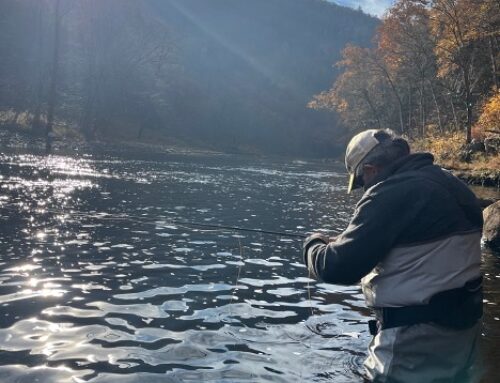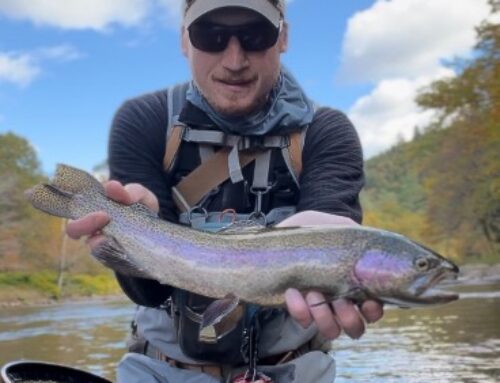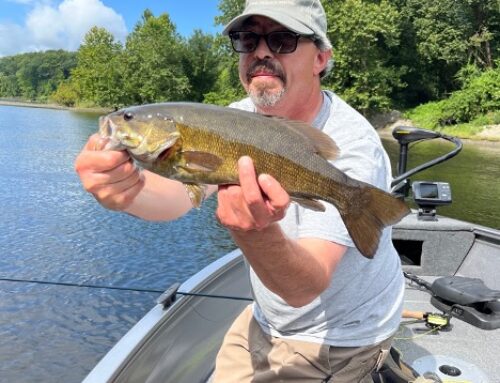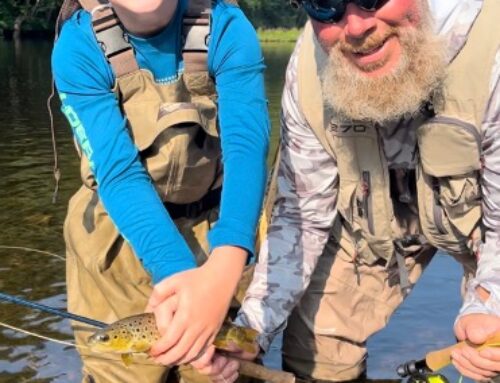There are a lot of Mayflies and Caddis hatches happening currently. Evening dry fly action has been good if you are in the right place at the right time. Wet flies are working well and nymphs are really putting up the numbers.
March Brow/March Brown Cripple Emerger 12-14, Adams 10-16, Tan/Olive Caddis 16-18, BWO 16-18, Cahills 12-14, Hare’s Ear, Pheasant Tail and Olive wet flies 12-16, Pheasant Tail Nymphs 12-18, Natural/Olive Caddis Nymphs 10-16, Black/Brown/Golden Stones 8-12, Copper Johns 12-16, Pink/Orange Hot Spot Nymphs 12-16, Olive/Black Woolly Buggers 6-10, Pink/Red Squirmies 12.
Recommended equipment for the Deerfield is 8’6″ – 10′ 4, 5 or 6 weight rods. 7.5-9′ 4X – 6X leaders. WF Floating line for all around use and a sink tip lines are recommended during high water levels.
The water levels on the Deerfield River are constantly changing due to the many dams throughout. If you are looking to wade waste deep to stalk rising trout then the 130cfs water flows in the catch and release areas is the ideal flow. If you are willing to adapt and throw on a nymph or streamer then you’ll be effective during the water releases of 800-1,000. The lower river (below #2 Buckland Dam) the river widens out a bit and normally does not drop below 300cfs. Good dry fly conditions would be between 300-500cfs. If you are willing to adapt and fish nymphs and streamers then you can be effective at higher water levels. For the catch and release area you can check the water flows here: http://www.h2oline.com/default.aspx?pg=si&op=255123. For below the #2 Buckland Dam check the water flow here:www.h2oline.com/default.aspx?pg=si&op=255126. Always be prepared and paying attention for rising water flow. They are subject to change always. Always check the flows before you go out and while you are out if possible!

